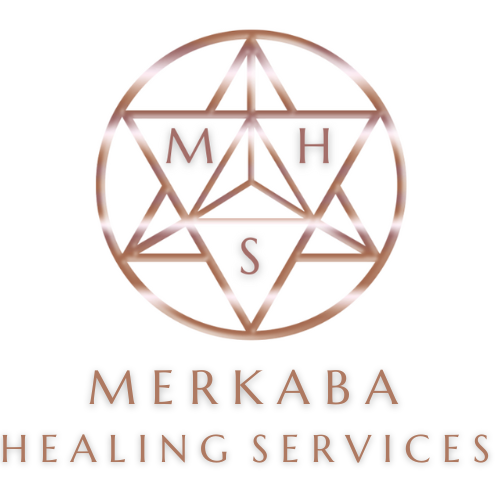What are Tension and Trauma Release Exercises?

Animals and humans are designed to shake off stressful experiences as they happen. Humans don’t shake after stressful events because they have “switched off” the shaking mechanism that would allow them to release the chemical build up and return to a state of calm.
Tension and Trauma Release Exercises (TRE) is a set of 7 simple exercises designed to help contract the muscles in the pelvis which are largely involved during times of stress or traumatic events. By contracting the psoas muscle regularly, the body’s natural “tremoring” mechanism is switched on. Tremoring is a shivering or shaking that occurs in some of the muscles as tension and stress chemicals that have been built up and stored over the years, are released. This leaves a state of deep relaxation and a feeling of peace and calm. TRE can be used as a self-help tool to shake off every day stress and anxiety and if used over the long term, past trauma too.
What are the immediate benefits?
- Calmness
- Improved sleep
- Improvement in anxiety
- Feeling more grounded and centered
Some of the long-term benefits that you may experience are:
- Greater ability to cope with stressful situations
- Release long-held accumulated stress and trauma from the body
- Deeper relaxation and more calm
- Feeling more clear-minded
- Improved sleep
- Reduced pain
- More energy and vitality
- Faster recovery of illness
- Improved core stability
- Greater ability to be present
- Deeper connection to self and others
Why can’t I just do cardio or dancing or play sport? I feel calm and relaxed afterwards.
The difference is that with TRE you learn what is call “interoception”. Interoception means that you learn to notice what is going on in the body and learn about, and increase your capacity for, sensations, emotions and stimuli. Being able to notice and explore what is happening internally, will give you clues about when self-care is necessary. This can help to prevent burnout, illness and disease. TRE is a self-empowering tool that you can literally do anywhere and are able to use for the rest of your life.

What sets TRE apart from other modalities?
TRE follows a non-invasive approach, so it is designed to release trauma from the body without having to talk about any painful experiences that you may have had. All you have to do is shake it off. You may share as much or as little about your experience as you feel comfortable to.
Another great benefit that sets TRE apart from many other therapies, is that it may help you to “complete” a traumatic event. During times of stress or trauma, you may feel as though you were “frozen” or unable to run, fight or scream when you should have. This was the body’s innate wisdom in ensuring that your chances of survival are increased. The problem is that, although you know that your body did the right thing to ensure your survival, your body may still feel stuck in time when the event happened. Notice how after a traumatic period, you suddenly develop headaches, neck or back pain, or constipation? That’s because the body never forgets.
This is also why although talk therapy can be helpful, few people find it effective, especially after a hijacking, robbery, sexual assault or domestic violence. Trauma and stress are stored in the body. So trauma or stress may show up as anxiety, flashbacks, digestive upset, short-temperedness or rage outbursts, struggling to concentrate, brain fog, memory loss, feeling numb, fatigue, addictive-type behaviours etc. TRE may bring up such memories and your body may feel like it wants to fight or scream even though the event had already passed long ago. The body is and will always be looking for release because it’s natural state is balance and your experience was unnatural. During your session, if your body is looking for release, your facilitator will help to guide you through these primal emotions to help you to “complete” the traumatic event so that your body moves towards balance.
Why can’t I just do TRE or hip-opening exercises that’s on YouTube or TikTok?
Like with any type of healing, developing a relationship with your therapist is key. This relationship acts as a safe container to enable healing to take place on a much deeper level. Your nervous system will attune to your provider’s nervous system which is safe, stable, provides connection and presence. This further enables the deep healing. One may use the videos (with certain precautions), but you won’t get the maximum benefits from it that you do when you are tremoring with a facilitator. The initial 6 contact sessions are crucial in entraining your nervous system to listen to the messages that your body is sending you as well as providing your nervous system with support.
Will I always have to do the entire set of warm-up exercises before I can tremor?
No! The warm up exercises are designed to help you to switch your body’s tremoring mechanism on. Usually after 3 to 4 weeks of consistent practice, you may find that your tremoring mechanism is switched on. This means that you won’t have to do the entire routine and you may only have to do one exercise to get your tremors going. Some people report that they can simply lie down in the tremor position, sit in the car or breathe deeply to activate their tremors.

How long is a session and what does it entail?
The initial session is 75 – 90 minutes. This includes a review of your case history, grounding exercise, check-in, TRE exercises and tremoring, integration and check-out. During the tremoring process, crying or bursts of emotion may occur. This is completely normal as the body attempts to release the trapped emotion and come back to balance. Subsequent sessions are 60 – 70 minutes and follow more or less the same structure.
How many sessions are required?
6 weekly contact sessions should be done with a provider (once a week for 6 weeks). This is so that your nervous system anchors into and attunes to, a safe, calming, grounded nervous system. In between the contact sessions, you will tremor once or twice on your own depending on how you feel. After the 6 weeks, your body will be attuned to what safety feels like, and you can continue to tremor on your own. Thereafter you may contact your provider if and when you feel you are in need of a contact session (this may only be many months later).
Are there any side effects?
Occasionally people feel nausea, upset bowel movements or physical aches and pains after doing TRE. This is often a sign that the body is releasing too many chemicals at one time. Your provider will teach you how to slow down the tremor process.
Who should be excluded from doing TRE?
TRE has been contra-indicated for anyone who:
- has had surgery or been in an accident less than 3 months ago
- is currently under psychiatric care
- undergoing treatment for cancer (surgery, radiotherapy, chemotherapy,etc)
- is pregnant
- anyone who is ill with an acute illness
Can sessions be done online/in person?
Online and in person
How much does a session cost?
Local: R750 per session (consultation fee waived)
International: USD 80 (all taxes and charges included)
Bookings can be made by WhatsApping 064 073 8253 or emailing admin@merkabahealingservices.co.za
